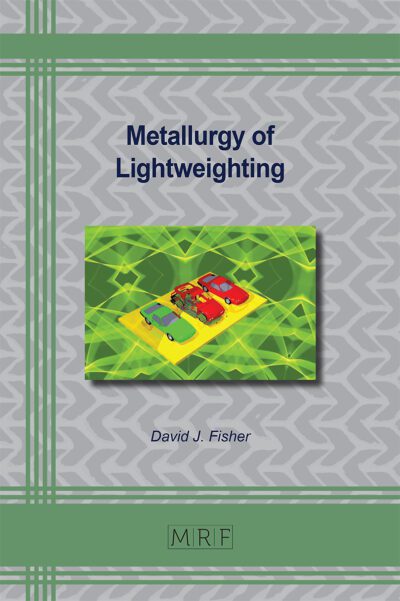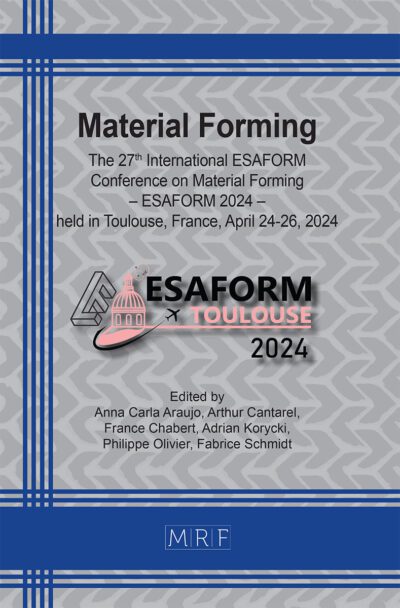Production by 3D printing of modular tools for highly customizable hydroforming of light sheet metals
Pasquale Guglielmi, Antonio Piccininni, Paola Ginestra, Angela Cusanno, Andrea Abeni, Valerio Minafra, Elisabetta Ceretti, Gianfranco Palumbo
Abstract. The present work proposes an innovative approach for producing complex shaped parts by HydroForming (HF) based on the adoption of customizable and modular polymeric dies fabricated via 3D printing. The proposed approach was tested on a benchmark axisymmetric Aluminum (Al) alloy component (AA5754-H111, initial thickness: 0.5 mm) with undercuts. The HF process was conducted at room temperature; the commercial Finite Element (FE) code Abaqus/CAE was used to define the oil pressure profile and the load applied by the blankholder to successfully fill the die cavity. In addition, the FE model allowed to study the effect of the assembly configuration of the die’s polymeric subparts in terms of shape and thickness of the component. The proposed approach provides an innovative tool that combines flexibility, adaptability, and precision for the manufacturing of complex shaped parts by HF.
Keywords
HydroForming, FE Model, Modular Tool
Published online 5/7/2025, 10 pages
Copyright © 2025 by the author(s)
Published under license by Materials Research Forum LLC., Millersville PA, USA
Citation: Pasquale Guglielmi, Antonio Piccininni, Paola Ginestra, Angela Cusanno, Andrea Abeni, Valerio Minafra, Elisabetta Ceretti, Gianfranco Palumbo, Production by 3D printing of modular tools for highly customizable hydroforming of light sheet metals, Materials Research Proceedings, Vol. 54, pp 1201-1210, 2025
DOI: https://doi.org/10.21741/9781644903599-131
The article was published as article 131 of the book Material Forming
![]() Content from this work may be used under the terms of the Creative Commons Attribution 3.0 license. Any further distribution of this work must maintain attribution to the author(s) and the title of the work, journal citation and DOI.
Content from this work may be used under the terms of the Creative Commons Attribution 3.0 license. Any further distribution of this work must maintain attribution to the author(s) and the title of the work, journal citation and DOI.
References
[1] J.C. Kelly, J.L. Sullivan, A. Burnham, A. Elgowainy, Impacts of Vehicle Weight Reduction via Material Substitution on Life-Cycle Greenhouse Gas Emissions, Environ Sci Technol 49 (2015) 12535–12542. https://doi.org/10.1021/acs.est.5b03192
[2] F. Czerwinski, Current trends in automotive lightweighting strategies and materials, Materials 14 (2021). https://doi.org/10.3390/ma14216631
[3] M. Türköz, Ö.N. Cora, H. Gedikli, M. Dilmeç, H.S. Halkacı, M. Koç, Numerical optimization of warm hydromechanical deep drawing process parameters and its experimental verification, J Manuf Process 57 (2020) 344–353. https://doi.org/10.1016/j.jmapro.2020.06.020
[4] P. Moriarty, D. Honnery, The prospects for global green car mobility, J Clean Prod 16 (2008) 1717–1726. https://doi.org/10.1016/j.jclepro.2007.10.025
[5] C. Bell, J. Corney, N. Zuelli, D. Savings, A state of the art review of hydroforming technology: Its applications, research areas, history, and future in manufacturing, International Journal of Material Forming 13 (2020) 789–828. https://doi.org/10.1007/s12289-019-01507-1
[6] P. Ottosson, E.L. Westman, I. Nygren, T. Pettersson, F. Niklasson, L.E. Brattström, Design of a sustainable Flexforming procedure for aero engine components in alloy 718, ICAS Proceedings (2024) 1–13.













